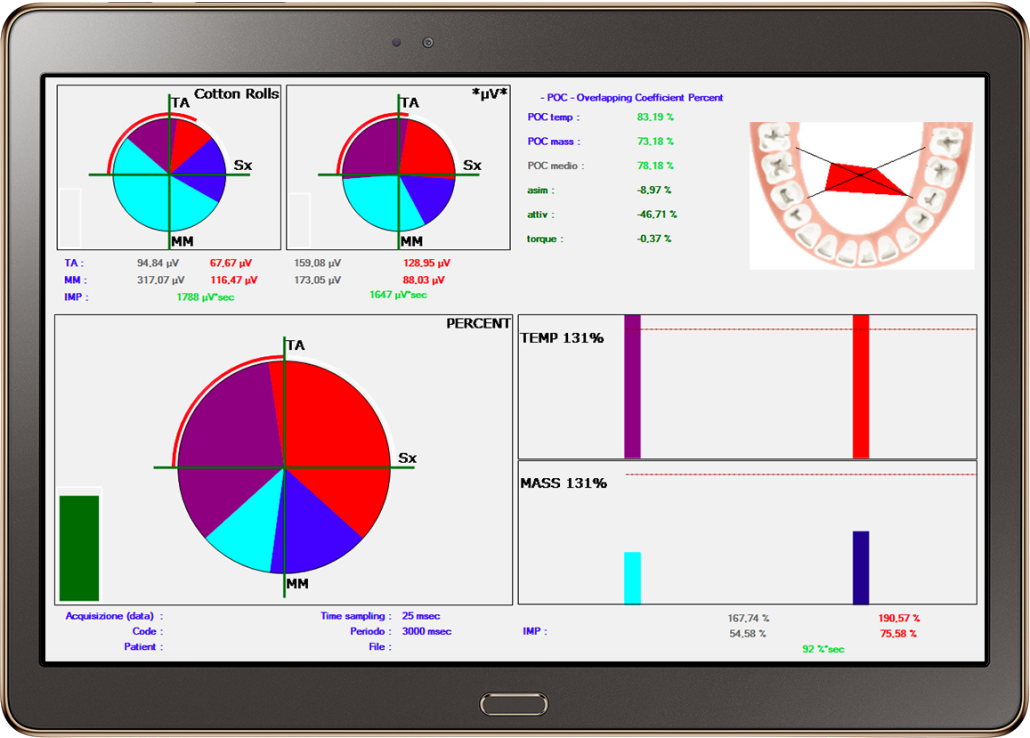PRINCIPLE
Dental occlusion does not cause physiological alterations to the recruitment of the masticatory muscles
APPLICATIONS
A coordinated chewing improves reliability and comfort of dental treatments
TOOL
An electromyography modern for a diagnosis of masticatory muscles simple and reliable

 evolves Freely (de Götzen Srl), first instrument specifically designed for analysis instrumental efficient masticatory muscle
evolves Freely (de Götzen Srl), first instrument specifically designed for analysis instrumental efficient masticatory muscle